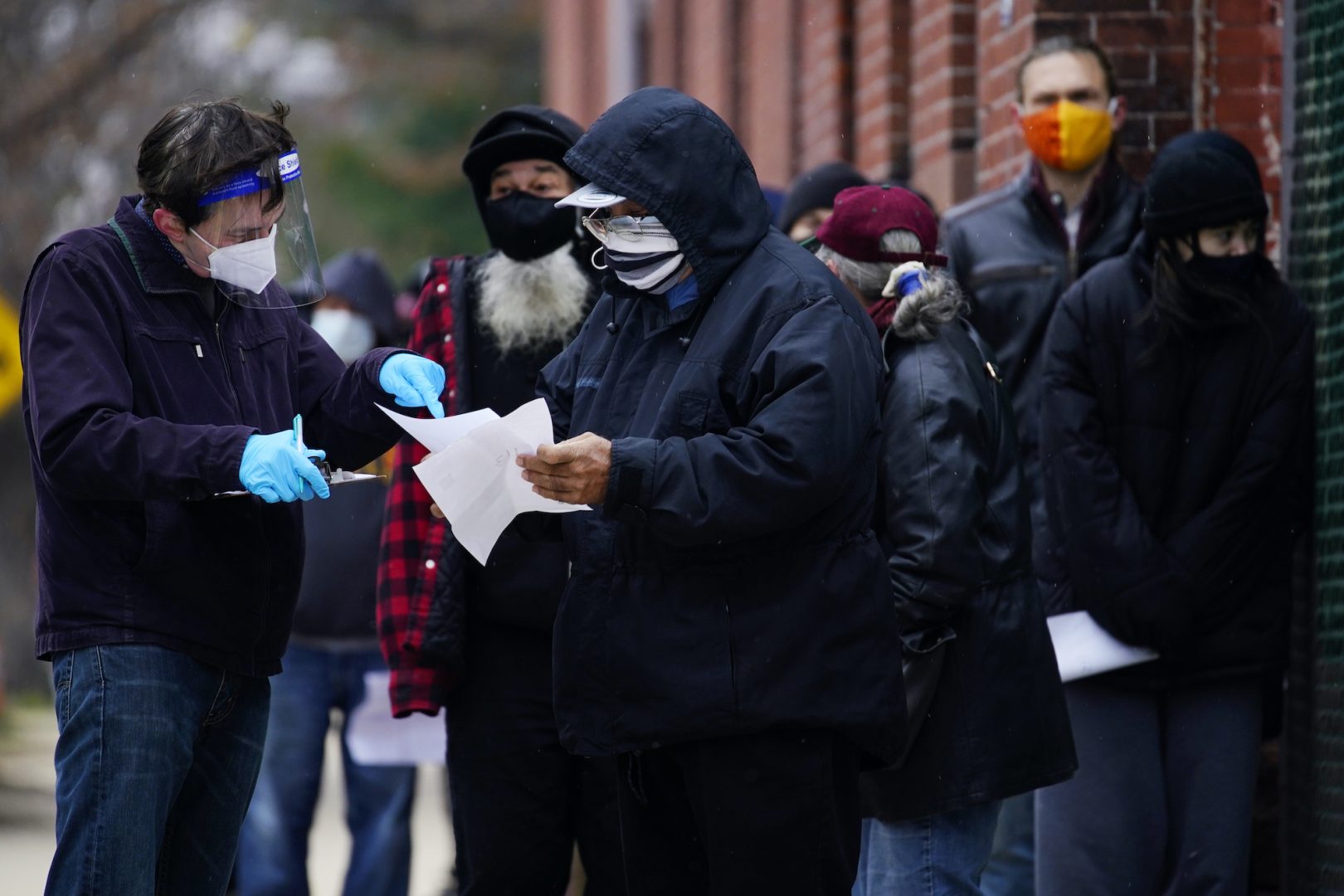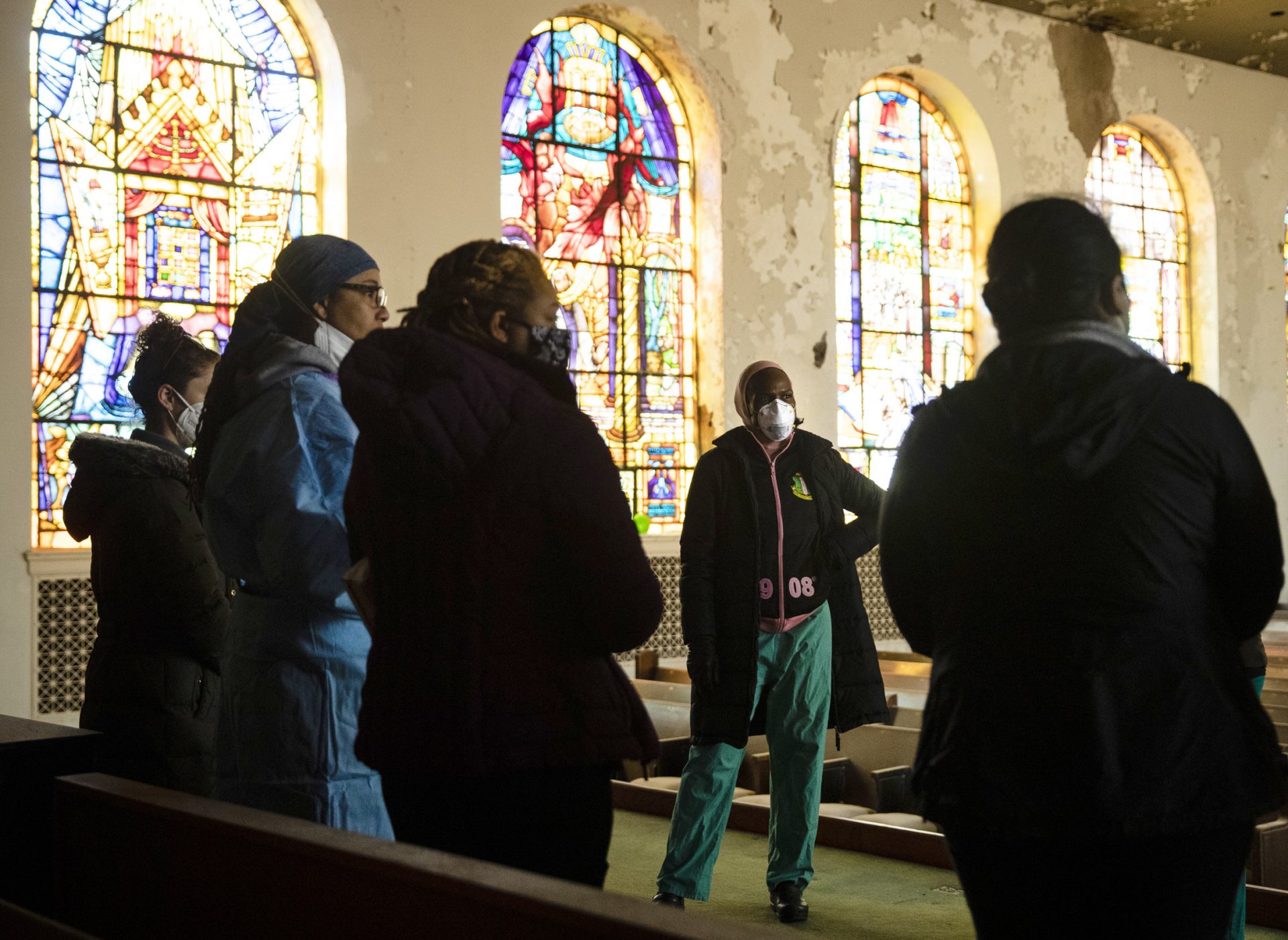
People line up outside a community center to take a free COVID-19 test, Wednesday, Dec. 9, 2020, in northeast Philadelphia.
Matt Slocum / AP Photo

People line up outside a community center to take a free COVID-19 test, Wednesday, Dec. 9, 2020, in northeast Philadelphia.
Matt Slocum / AP Photo

Matt Slocum / AP Photo
People line up outside a community center to take a free COVID-19 test, Wednesday, Dec. 9, 2020, in northeast Philadelphia.
(Philadelphia) — Pennsylvania officials announced Wednesday a new initiative that aims to pinpoint social determinants of health, such as systematic racism, by geographic region.
The goal, they say, is to find solutions to disparities and increase access to quality health care.
“We’ve also seen that the COVID-19 pandemic has fallen on the same pre-existing disparities that predated the pandemic. Communities of color have higher rates of COVID-19 illness and death. But even before this, their inequities in the rates of chronic conditions like diabetes and hypertension,” said Department of Human Services Secretary Teresa Miller.
“The pandemic has lowered the life expectancy of Black Americans by three years, compared to a one-year decrease in life expectancy in the general public.”
She said these life expectancy differences can be traced back to policies that perpetuated systemic racism, such as redlining — which segregated neighborhoods by race, denied Black singles and families mortgages, and left them with lower property values, limited access to capital, employment opportunities, healthy food, and transportation.

Matt Rourke / AP Photo
Dr. Ala Stanford speaks with volunteers ahead of the opening of a “barrier free” COVID-19 test location outside Pinn Memorial Baptist Church in Philadelphia in April.
The effects of historic institutional racism still exist today. Miller said newborns in certain neighborhoods of North Philadelphia have an average life expectancy of 64 — when just a couple miles to the south, newborns are expected to live to 87.
In Luzerne County, life expectancy is 73, but just minutes away, life expectancy is 85. While in Erie, life expectancy is 60, when just minutes away life expectancy is 80, Miller said.
“A 20-year life difference based on the block where you were born is profound,” she said. “And many of these areas with profound disparities have a history of redlining, showing a direct link between historical racism and the health effects of today,” she said.
DHS will amend contracts with the state’s Medicaid managed care organizations to require that they work together to create five Regional Accountable Health Councils — what the state is dubbing RAHCs.
RAHCs will be forums for strategic health planning across the health care system. Health care providers across the board will be divided up by region — the southeast, the northeast, Lehigh Capital, northwest, and southwest. The groups will study disparities and individual needs in their specific regions, and will then develop solutions that address these individual challenges.
Each RAHC is required to draft a regional health transformation plan that will guide their agenda. These plans will identify geographic areas hit hard by disparities, as well as the root causes of these disparities. The RAHCs will then develop strategies to address the disparities, and monitor for improvement in health and equity.
There also will be incentives given to those who work to eliminate disparities.
Officials hope the initiative will allow providers to communicate with one another, improve the way they target resources, and therefore have a better shot at addressing disparities.
“When we identify these health equity zones the benefit is … we can target those communities that have had this historic divestment, that’s been predominantly communities of color, and say that we are going to more target these areas for grants, for opportunities for rebuilding them … The difference between equity and equality is equity is really lifting up those communities that have had that historic divestment, and equality is treating everybody the same,” said Doug Jacobs, DHS chief innovation officer.
Miller added that the initiative will be data-driven.
“We’re really targeting areas where — at least that’s what I think will be identified through the RAHCs — areas that, because of systemic racism and particularly redlining policies, those communities were just divested of everything. The jobs left, the grocery stores left, and you can see it in every single metric today. Life expectancy is how I think they all come together. You can just see these huge disparities in life expectancy,” she said.
“We can’t pretend like these areas are the same as everybody else and just continue to kind of ignore the fact that they’ve been divested of a lot of resources over time. So by targeting these areas, hopefully we can then really see more investment by a lot of different entities. Hopefully then we will start to see that data change. I think that’s what we’re going to be interested in, ‘Is going back to the data to see are we making a difference?’ And if we’re not, then we need to change something up.”
WHYY is the leading public media station serving the Philadelphia region, including Delaware, South Jersey and Pennsylvania. This story originally appeared on WHYY.org.

Get insights into WITF’s newsroom and an invitation to join in the pursuit of trustworthy journalism.
The days of journalism’s one-way street of simply producing stories for the public have long been over. Now, it’s time to find better ways to interact with you and ensure we meet your high standards of what a credible media organization should be.